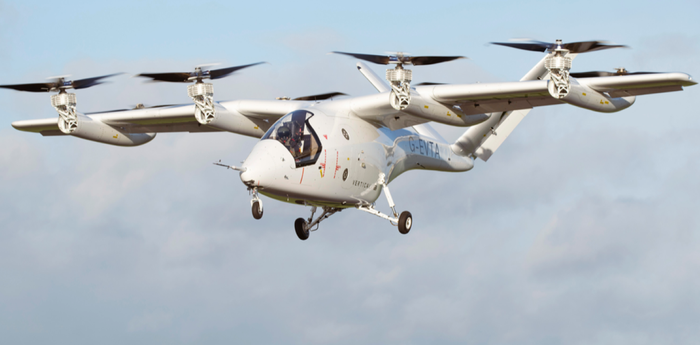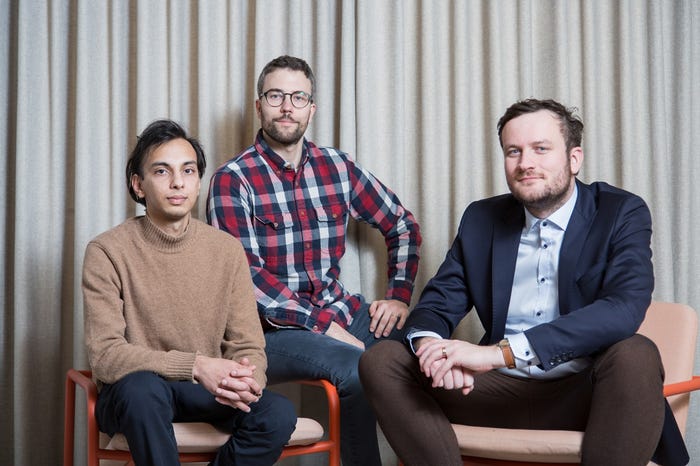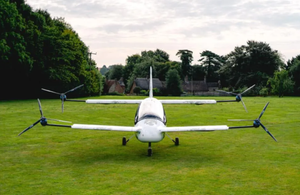How IoT Will Change the WorldHow IoT Will Change the World
The Internet of Things will provide new opportunities to change the world and how we interact with it.
June 8, 2017

By Ulf Ewaldsson
The Internet of Things (IoT) has quickly emerged as a strategic transformation agent for all industries as it blends the physical and digital worlds. By connecting things and providing “smartness” to them, new value is created across a number of sectors in the Networked Society.
Ericsson's latest Mobility Report predicts that we are heading for an IoT-dominated world by the end of 2018. That's less than two years from now! So for the first time ever, the mobile phone will no longer be the most common and most intimate device we will use to get ourselves connected to the Internet — it will be our wearables, cars, home appliances, cities, industries, you name it! And in five years, we expect 28 billion connected devices around the world, with more than half being IoT devices.
As things are connected, new opportunities arise for service providers, industries, cities and enterprises whereby new solutions are developed that change the world we live in and the way we interact with it. Let me give you a couple of real-life IoT examples that are enabling this change.
Connected city: Reducing crime in Brazil
São Jose Dos Campos City was suffering from an increased crime rate, so city administrators decided that one way to combat this situation was through technology. Ericsson helped the city become safer by modernizing the existing city public safety, emergency response and traffic management operations with a new Emergency Response & Traffic Management Control solution. Starting with the integration of existing CCTV and traffic light infrastructure, 500 new video cameras, a new fiber network infrastructure and 100 new tablets in vehicles were added.
In true IoT fashion, these systems are integrated with real-time GIS information, vehicle tracking, traffic information systems and multi-agency integration with real-time tracking and dispatch of Police and Traffic department vehicles. This modernization project generated tangible and live-saving results, as the homicide rate was reduced by 18% while also improving the availability of evidence needed to successfully prosecute criminals.
Connected Water: Keeping our water supply safe
Ensuring “safe” water sources for human consumption is key to any community but the current monitoring solutions are complex, with several components required to solve the problems of power, telemetry and maintenance. They are expensive, with a focus on high-precision measurements instead of environmental fingerprinting. Monitoring is not real-time, so the ability to alarm, alert, and share information among stakeholders is limited.
In Georgia, we are working with the Connected Water solution for the Chattahoochee River, where low-cost sensors are now reporting water quality via cellular networks, turning a reactive monitoring process into a prescription- and prevention-based process that significantly reduces the cost of monitoring and will exponentially decrease the cost of treatment over time through real-time early identification of abnormal conditions in the water.
This IoT innovation, which delivers strong sustainability benefits, has just won the CTIA Super Mobility's Annual Emergency Technology Award.
Connected Buildings: Improving efficiency, utilization and convenience
Another innovative IoT solution area is around smart buildings, where our technology assists facility managers in space management, space utilization, planning of maintenance based on usage, control of temperature, air quality, humidity and ventilation optimization.
In one instance, data from sensors allows facility managers to take actions to adjust the temperature profiles where each degree adjustment can reduce heating/cooling cost by 5%. In another case, our IoT solution allows building managers to do meal planning and preparations to match the number of people in the buildings, thus reducing food wastage: Find out more in the following video:
Now, let's shift gear towards the consumer market. Our recent ConsumerLab study reveals that wearable devices related to personal safety and security were rated highly by smartphone users, with ideas such as panic buttons and wearable location trackers being the most popular.
That study also reveals that the feeling of safety drops by 20% among consumers from day to night. Women in particular feel vulnerable in situations such as waiting for public transport at night. And while smartphones do lend a sense of safety, with security-related apps, consumers desire a discreet way to send an alert for help. So security wearables will be one major area IoT can add significant value to consumers.
A new generation of network technologies for IoT
Whether in the enterprise or consumer context, IoT starts with connectivity. There are already more than 400 million cellular IoT devices, but that is just the beginning. A wide range of new technologies are emerging that enable new value and capabilities for connecting the next new “thing” to a new generation of analytics and applications.
A new wave of connectivity innovations in LTE, LPWA and the emergence of 5G are bringing new capabilities and cost/performance options tailored to specific devices and applications. These technologies bring new capabilities to bear while significantly lowering cost to bring the next thing “online.”
To ensure success, service providers must get connectivity right early in the game so they can build a successful IoT business on top of it. The “Massive IoT” market is a growth area dominated by low-cost, low-bandwidth sensor-based devices. This segment is served by a new generation of highly cost efficient GSM and LTE cellular technologies known as Category M1 and NB-IoT, whereby the trusted and secure GSM and LTE connections of today are expanded for use by millions of potential IoT applications.
In my 5G blog published on Light Reading, I talked about the emergence of 5G and how it is bringing a new set of technologies that enable high-bandwidth, low-latency real-time IoT applications. This will be fundamental to the “Critical IoT” market, for example, enabling an autonomous car to be able to apply its brakes in a couple of centimeters instead of a couple of meters.
When considering which technology to pick for any IoT implementation, there are pros and cons of capability, security, cost and longevity of the solutions that must all be taken into account: Bridging that new connection to a new generation of cloud and analytics technologies that drive advanced business and operational transformation is key to harnessing the full potential of IoT.
With connectivity as a foundation, communications service providers are in a prime position to benefit from the IoT evolution and they will need a long-term vision to evolve their networks while having a clear view of where else to position themselves along the value chain to capture future IoT market opportunities.
The IoT ecosystem is still nascent, fragmented and complex, with myriad established as well as emerging players from all quarters of the ICT landscape. For service providers and enterprises alike, it's essential to have an IoT transformation partner that can help them navigate the complexity, that can bring not only connectivity technology, but also platforms and components such as analytics and monetization, and expertise in vertical industries — with an active ecosystem role. They need a partner they can trust and work with, whatever their IoT aspirations.
You May Also Like






